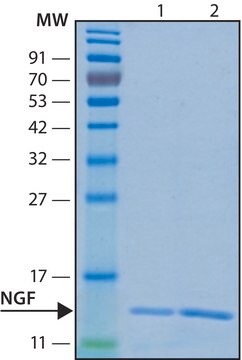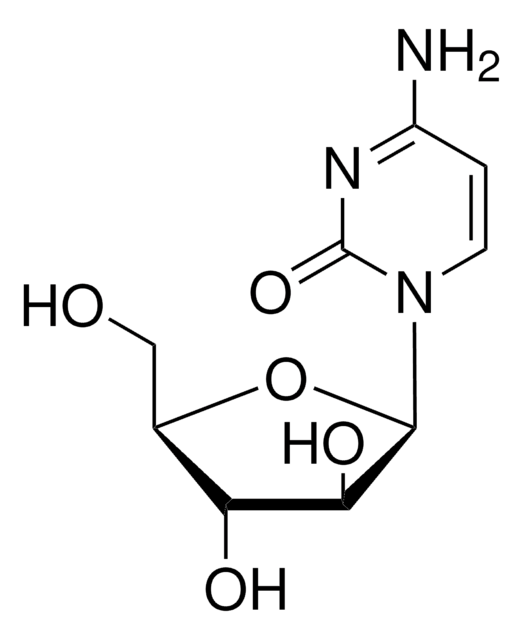N8133
Nerve Growth Factor from Vipera lebetina venom
lyophilized powder, suitable for cell culture
About This Item
Prodotti consigliati
product name
Nerve Growth Factor from Vipera lebetina venom, NGF, lyophilized powder, suitable for cell culture
Origine biologica
Vipera Lebetina
Livello qualitativo
Forma fisica
lyophilized powder
Potenza
0.2-20 μg/mL ED50/EC50
Qualità
endotoxin tested
PM
protein 32.5 kDa
Confezionamento
pkg of 0.1 mg
tecniche
cell culture | mammalian: suitable
Impurezze
<10 EU/vial
Colore
white to off-white
N° accesso UniProt
Temperatura di conservazione
−20°C
Stato fisico
Nota sulla preparazione
Risultati analitici
Codice della classe di stoccaggio
11 - Combustible Solids
Classe di pericolosità dell'acqua (WGK)
WGK 3
Punto d’infiammabilità (°F)
Not applicable
Punto d’infiammabilità (°C)
Not applicable
Dispositivi di protezione individuale
Eyeshields, Gloves, type N95 (US)
Certificati d'analisi (COA)
Cerca il Certificati d'analisi (COA) digitando il numero di lotto/batch corrispondente. I numeri di lotto o di batch sono stampati sull'etichetta dei prodotti dopo la parola ‘Lotto’ o ‘Batch’.
Possiedi già questo prodotto?
I documenti relativi ai prodotti acquistati recentemente sono disponibili nell’Archivio dei documenti.
I clienti hanno visto anche
Il team dei nostri ricercatori vanta grande esperienza in tutte le aree della ricerca quali Life Science, scienza dei materiali, sintesi chimica, cromatografia, discipline analitiche, ecc..
Contatta l'Assistenza Tecnica.







